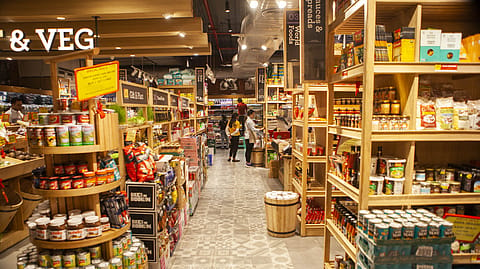Rural resilience versus urban woes
“Urban slowdown shall continue for two–three more quarters, driven by inflationary pressures and higher housing rental costs,” says Abneesh Roy.

India’s consumer sector is caught in a tale of two economies: a challenging urban demand environment juxtaposed with a gradual recovery in rural markets. Urban areas, impacted by inflationary pressures, low wage growth, and rising housing costs, are witnessing subdued consumption. Meanwhile, rural demand, buoyed by government freebies and favourable rains, continues to outpace its urban counterpart, as per the Q3FY25 preview by Nuvama Research.
Urban slowdown weighs on consumer staples
The urban consumption slowdown is evident across staples, where inflation in raw materials like palm oil and tea has compelled companies to resort to price hikes. This has led to downtrading, with consumers opting for smaller packs of products, further impacting volume growth. “Urban slowdown shall continue for two–three more quarters, driven by inflationary pressures and higher housing rental costs,” says Abneesh Roy, ED, Nuvama Institutional Equities.
Hindustan Unilever and Godrej Consumer Products reported weak sales for soaps and detergents, while Nestlé faced pressure in its Maggi portfolio as consumers turned to more affordable snacking options. On the discretionary front, paints and other premium products bore the brunt of tepid urban demand, with players like Asian Paints witnessing a 5.5% YoY revenue dip.
Rural revival cushions the blow
In stark contrast, rural markets have shown steady recovery, outpacing urban demand for the third consecutive quarter. “Rural demand expanded twice as fast as urban demand in Q2FY25 at 6% compared with urban growth of 2.8%,” notes the report. This growth has been fuelled by increased government spending, better monsoons, and targeted initiatives like free food grain distribution, according to Roy.
FMCG companies like Britannia and Marico have leveraged this resurgence, reporting higher growth in rural-focused product lines such as Parachute and Saffola. Britannia registered a 5% YoY revenue increase, driven by rural biscuit consumption, while Marico posted double-digit growth in its economy segment.
Recommended Stories
Despite the urban drag, certain players have managed to navigate the turbulent landscape effectively. United Spirits and United Breweries, supported by the Andhra Pradesh liquor policy reforms and a robust wedding season, clocked 14% and 13% revenue growth, respectively. Premiumisation trends in the alco-beverage space further boosted their performance.
Pidilite emerged as a standout in the discretionary segment, with a 6.9% revenue growth driven by rural construction and a strong push in adhesive and waterproofing solutions. Pidilite’s volumes in rural markets grew in double digits, mitigating the impact of urban challenges, as per Nuvama.
Pricing strategies and margin pressure
Companies across the sector have faced margin pressures due to rising input costs. Palm oil prices surged 35% year-to-date, impacting gross margins for players like Godrej Consumer and Bikaji Foods. To counteract this, FMCG giants have resumed price hikes in low-to-mid single digits for staples such as snacks and tea.
(INR CR)
The report anticipates further price adjustments in Q4FY25, especially in categories like tea and coffee, as commodity inflation persists. However, companies remain cautious about aggressive pricing, given the sensitivity of rural consumers and the fragile urban sentiment.
The mixed performance in Q3FY25 underscores the resilience of rural markets amid urban headwinds. While the sector’s overall growth remains modest—6% YoY revenue growth is projected for Q3FY25—the outlook for FY26 hinges on macroeconomic factors, inflation trends, and consumer sentiment. As companies navigate this dual-speed recovery, those with diversified portfolios and strong rural linkages are likely to emerge stronger.